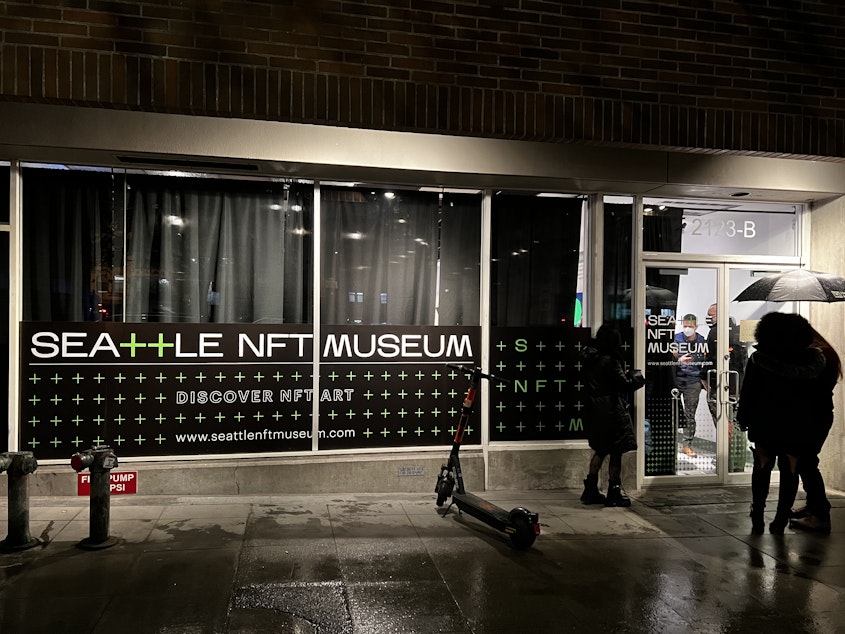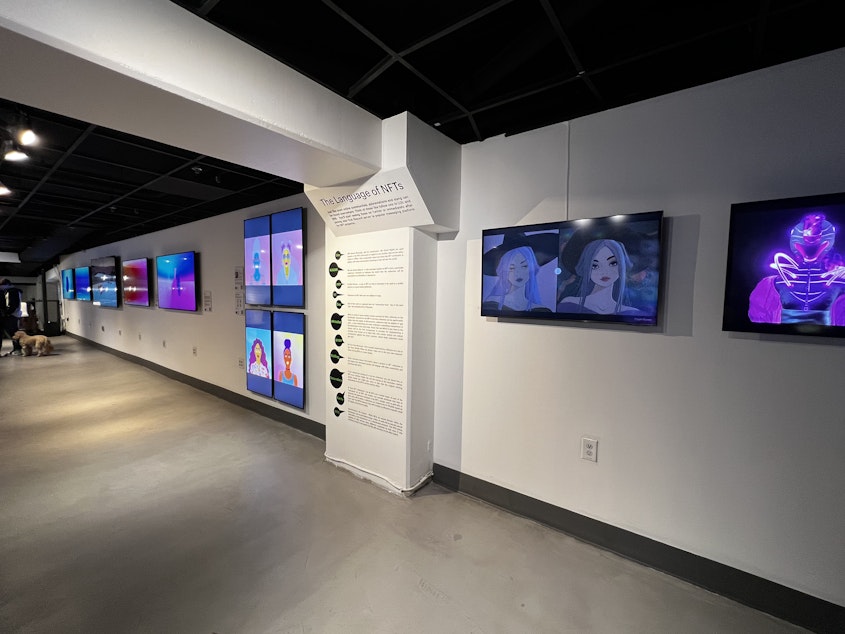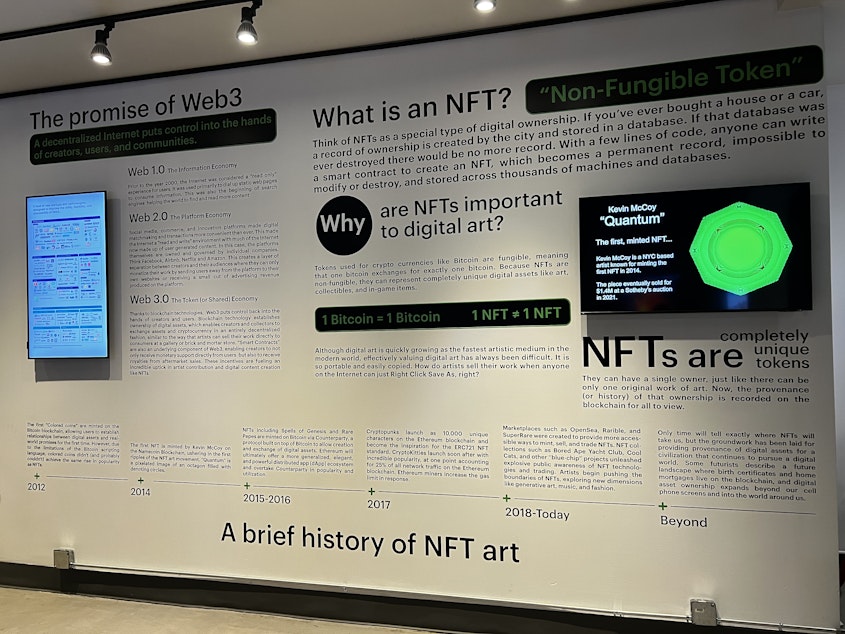What are non-fungible tokens? Seattle's new NFT museum is here to explain

NFTs — non-fungible tokens — are a trendy new internet phenomenon. They operate with other monolithic technologies like cryptocurrency and the blockchain, the heralds of what the tech industry is calling "Web 3.0."
But what does all that mean? Seattle's new NFT museum wants to help you find the answer.
The concept of the NFT can seem simple at first: a non-fungible token is a certificate of authenticity. One that conveys ownership of a piece of content, not unlike the stamps of approval that come with high value artwork.
And that's where the simplicity ends.
If you've spent any amount of time online recently, you've probably seen that NFTs are dominating the discussion of Web 3.0, what many in the tech industry believe to be the next evolution of the internet. Other hot buzzwords — like "cryptocurrency" and the "blockchain" — are also a part of this discussion.
From the outside looking in, it's easy to get lost in explanations of what these words and concepts signify. There's an entire world of digital currency used to buy digital assets for use on digital profiles.
It's in the confusion around NFTs that Seattle's new NFT museum — the first of its kind in the world — is hoping to make an impact, helping the general public understand it all.
Sponsored


A new space in Belltown, the museum looks like your classical gallery space, complete with the trademark white walls, hanging gallery pieces, and corresponding descriptions. Only, the artwork you're viewing doesn't 'exist' — at least not in the traditional sense. Almost everything here is fully digital, including Instagram-style self-portraits, metaverse lounging rooms, and AI-generated art prints.
The museum is more exclusively focused on art right now, much like NFT pop culture. But evangelists of the technology explain that the practical application of the infrastructure behind NFTs could expand far beyond exclusive profile pictures and dazzling graphic design prints.
The aspiration is for NFTs to function as proof of ownership for anything imaginable, from birth certificates to home mortages. But at the moment, NFTs are the fastest growing artistic format online, and offer digital creators more profitable control of their work.
Sponsored
"I've been a local freelance photographer for about four years," said Kelsey Johnson, whose digital photography was featured as part of the museum's second feature gallery. "I got to a point in my career where I was tired of creating for an algorithm. I was tired of creating for a commercial client and what other people wanted me to do."
Numerous digital artists have found that they can find more financial stability through NFTs than through the traditional payscale of social media's biggest platforms, and that revelation has skyrocketed the popularity of NFT art. It's also created a somewhat approachable concept for the public.
"I'm interested in the technology, I'm interested in cryptocurrency," said Laurie Schwartzberg at the gallery opening. "All of that, as a math teacher, is super interesting to me."
Related to the confusion around the language and systems of NFTs, inventor Craig Strong was initially skeptical, but ultimately purchased three pieces.
"There's been some big barriers to entry for me," Strong said at the gallery opening. "I've been in the crypto space since 2017, and I think like most things, we're wired to be suspicious."
Sponsored
Listen to the full story, including Soundside's conversation on the concerns with NFTS with the museum's co-founders, Peter Hamilton and Jennifer Wong, by clicking the audio above.




